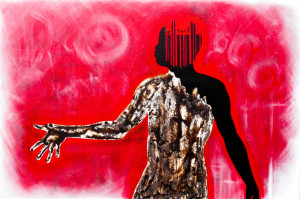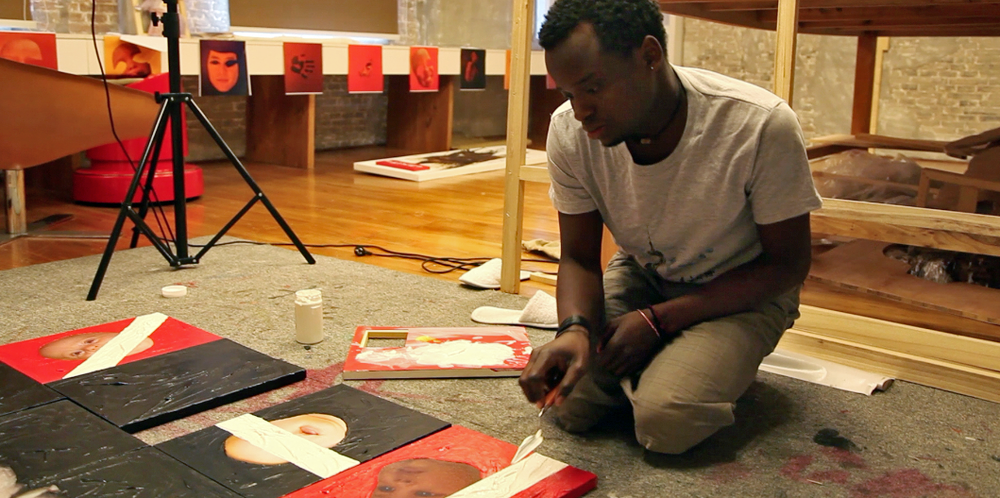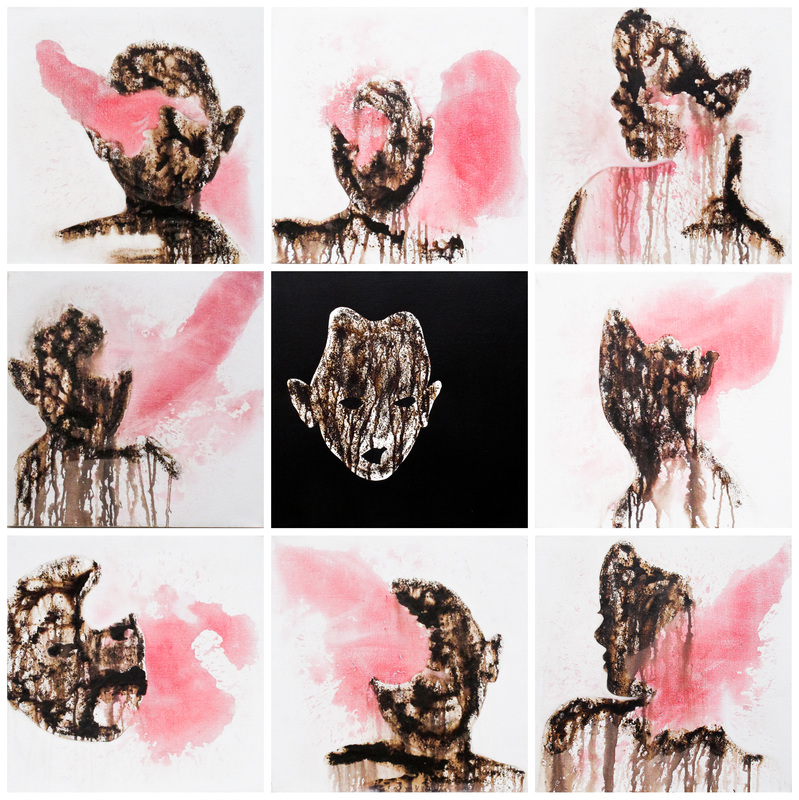
Trésor Malaya
1983 | Democratic Republic of the Congo
About:
“July ended in style at the opening of Tresor Malaya’s exhibition ‘What is it For?’ yesterday at Kuona Trust. The mixed media exhibition and installation by the Kuona Trust artist in residency has an immediate and visceral effect on the audience. Drawing parallels between two slum dwellings, Kibera in Kenya and Kalubwe in Congo, the show is interactive, highlighting various social and political issues in Africa. The audience is forced to ask questions, and both physically and intellectually confront the reality and significance of the two slums but more specifically Kibera.
 Looking.
Looking.
First thing you see when you enter the Kuona Trust gate is a wooden tunnel in front of the gallery space. No phones are allowed in the tunnel which is very dark with three turns and curtains every few steps. One has to reach out with their hands and feel the way forward or risk banging into a wall. There is a very real fear the first time, a sensation of helplessness and confusion. This is the ingenious intention of the artist.
At the end of the tunnel is the entrance to the gallery. The pieces on display are diverse and intricate, with an immediate effect on the audience. At one end of the gallery is the piece entitled The Lost Day which is used for the event poster. When asked the significance of this piece, Tresor explains that one was ‘to show that it’s not only people who kill people, but also religion. The babies with the bloody faces represent the public population. “If you pay attention to the cross there are signs on it you meet everyday when you are walking,” just like the church which is what the cross represented to the artist. “In one town you can find 3 or 4 churches, why? That’s my question maybe you can answer yourself.”
Tresor Malaya encourages an interactive audience by leaving most of his paintings untitled encouraging the audience to come with their own impressions and titles. In the Q & A (which was conducted in French with a translator) at the exhibition, he answered a lot of questions with questions provoking the audience to interpret and interact with the exhibition and installation for themselves. A thought provoking and significant use of art by the charming artist.

“I went to Kibera everyday for two months, I left in the morning and came back at night. I walked around and interacted with the people there then came to Kuona and worked.” Through his art and his work Tresor forces the world to question ‘What is it for?’ What is Kibera for? Why is it there? Comparing the two slum dwellings, Kibera and Kalubwe in Congo Tresor explains that at least Kalubwe has running water, electricity and roads. Why not Kibera?
Through the tunnel and into the gallery- a surrealist dreamscape where the visceral silhouettes are somehow vocal and in motion- the audience gets the impression that they are looking at their own hidden thoughts and feelings. But why are these thoughts and feelings hidden? Why is so little being done about Kibera and the many other slums? 60% of Nairobi’s population lives in slums but we hear no protest, no questions, no initiative from the government and little from the citizens.
 At work in residency in China.
At work in residency in China.
Tresor explains that one of the aims of the show is to put the audience through what residents in Kibera go through as well as to address society’s passive nature prompting a more pro-active approach in finding solutions to this terrible problem. Tresor Malaya focuses on social issues, our apathy as society and the clear sense of misguided democracy with the hope that through the exhibition, we as an audience find answers in the questions we ask ourselves.
Copyright: Ondi Madete (on UP, Nairobi’s Urban Perspectives Website)


